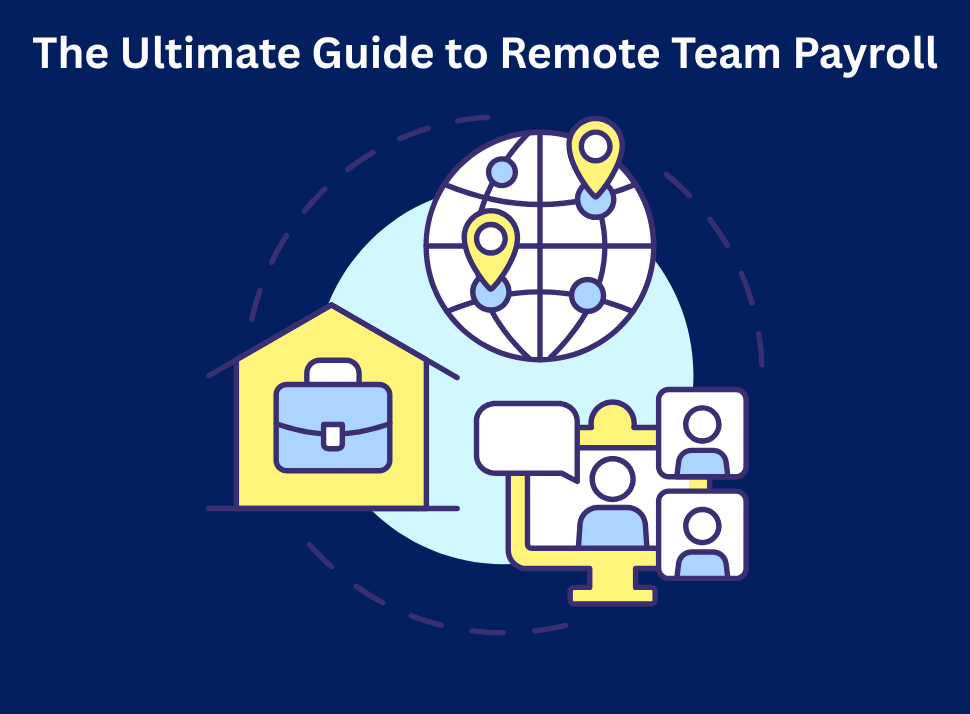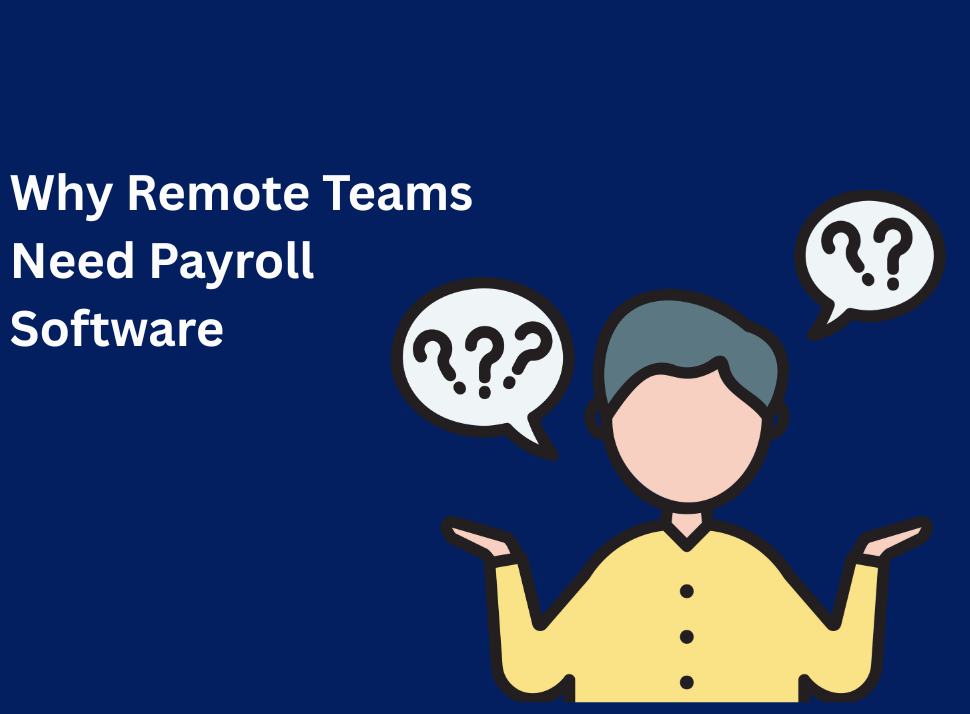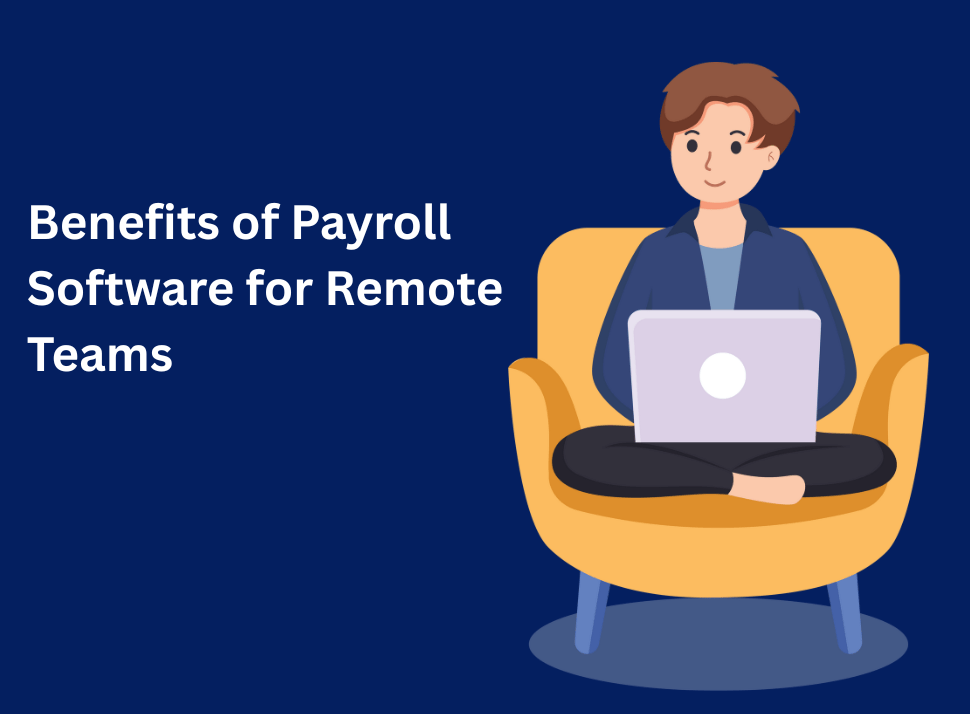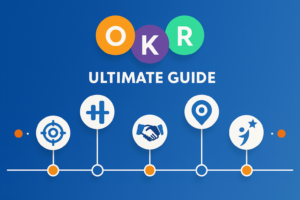Payroll for remote teams is necessary for employee compensation, tax management, and compliance. This guide outlines how to select an appropriate payroll solution and what features are important to consider.
The Increasing Payroll Complexity of Remote Teams
In the current flexible work culture, payroll for remote teams has become an even more complex process than before. With employees scattered across states, time zones, and even nations, payroll administrators and HR professionals have to deal with newer challenges in getting timely and accurate payroll.
Remote and hybrid workforces demand more than mere traditional systems. Manual entries, dispersed data, and region-specific tax laws make it almost impossible to handle payroll without the proper tools. That’s why embracing a contemporary, cloud-based payroll solution built for remote work is no longer a choice—it’s necessary.
Why Payroll Software Is Important for Remote and Hybrid Teams
Safe and On-Time Payments Across Borders
When you work with a distributed workforce, getting the workers paid on time and as needed is one of the biggest responsibilities. Delay or miscalculation due to the time difference can impact the morale and the trust level. Payroll software for remote workers removes all the risks by making it automated.
Managing Tax Compliance in Various Places
Tax regulations differ widely by location—some employees work in states with no income tax, while others are in taxed provinces, and international teams face added complexity with cross-border tax agreements. A robust remote payroll solution streamlines tax deductions, filings, and compliance across all regions.
Adherence to Regulatory Rules and Labor Legislation
Labor law compliance is not optional. From minimum wage to overtime law and mandated benefits, there is much to remain compliant with. Remote and hybrid workforce payroll keeps your company compliant with local labor laws in an automatic way.
Ensuring Transparency and Control
Remote employees are not entitled to simply walk into the HR department to ask about pay slips or tax documents. A self-service portal gives employees 24/7 access to payroll data, raising the satisfaction level and reducing HR workload.
How to Choose the Best Payroll Software for Remote and Hybrid Employees
Cloud-Based versus On-Premise Solutions
For virtual teams, cloud payroll software would be the most suitable choice for payroll. A cloud payroll solution can be accessed at any time from anywhere. On-premise software, though, ties you to a location and does not typically have remote-friendly features.
Integration with Accounting and HR Systems
Choose the payroll software that will smoothly integrate with your existing HRMS, time-tracking software, and accounting systems. Integration saves on manual data entry, minimizes errors, and maximizes interdepartmental workflow efficiency.
User-Friendly for Remote Employees and Payroll Teams
Whatever it is, whether the accounting staff is doing it to calculate bonuses or a remote employee is downloading a pay stub, the software must be easy to use and intuitive. Use software with easy-to-use dashboards and minimal learning curves.
Multi-State and Worldwide Payroll Capabilities
If you have remote employees working in several states or nations, your payroll system needs to handle multi-jurisdiction payroll processing. This means it should have no issues with multiple tax regulations, currencies, and pay frequencies.
Mobile Access and Employee Self-Service
Modern remote worker payrolls need cellular access. Remote workers need the ability to remotely log in by phone to review payment history, download forms, or update taxes while out of the office.
Top Features to Find in Remote Team Payroll Software
Automated Payroll Processing
Automation is the key to efficient payroll for remote employees. The chief advantages are:
- Computing salaries, bonuses, and deductions automatically
- Processing payday direct deposits as scheduled
- Preparation of live expense, tax, and payroll reports
- Automating its compliance with tax and labor regulations
With automated procedures, payroll offices can save labor hours and avoid costly mistakes.
Remote Employee Management
Payroll for remote teams must be processed via centralized systems. Look for tools that:
- Store and manage employee information in one place
- Offer onboarding and offboarding digitally
- Print pay stubs, W-2s, and tax returns
- Control changes to address, bank data, and tax returns
This assists all remote workers wherever they may be.
Security and Compliance
Security is paramount when dealing with payroll information. Make sure your system provides:
- Role-based access controls
- Encryption of data in motion and at rest
- SOC 2 and GDPR compliance
- Detailed records of all transactions
These functionalities shield your business and employees from data loss and compliance issues.
Scalability and Integrations
Your remote payroll solution must expand as your business expands. Some things to consider are:
- Seamless integration with existing HR, CRM, and finance systems
- Support for international payroll
- Custom-built APIs for high-level automation
- Affordable pricing plans for small organizations as well
This makes the system well worth the investment as your company expands by departments and regions.
Payroll Software Advantages for Hybrid and Remote Teams
Increased Accuracy and Lower Mistakes
Automated calculations and validation rules greatly lower the probability of errors in salary, bonuses, or deductions. This builds confidence among remote workers and lessens time spent on fixes.
Multi-Region Compliance Simplified
Being able to control legal compliance, benefits, and taxes for several areas from one platform is priceless. It lets companies recruit talent from all around without extra legal concerns.
Improved Staff Experience
A well-organised payroll for remote teams increases employee happiness. Digital payslips, self-service portals, and timely alerts help to provide a seamless experience for the whole team.
Reporting and real-time insights
Managers can create thorough reports on employee pay, tax obligations, and payroll costs. These ideas assist at leadership levels in budgeting, forecasting, and decision-making.
Lowered Operating Expenses
Automated payroll systems eliminate the need for manual procedures, third-party consultants, or duplicate systems. It enables your HR and finance departments to concentrate on strategic goals and saves expenses.
Best Ways to Maximise Payroll for Remote Teams
Hold Frequent Audits
Automated payroll data still needs to be audited often. To guarantee total accuracy, cross-check tax submissions, deductions, and employee hours.
Revise Payroll Policies According to Local Law
Laws change often. Work with a software company that either lets local tax or labour rules be customised or updates its system in real-time.
Keep Remote Staff Updated
Develop onboarding manuals or educational tools to enable staff members to grasp how the payroll system for remote teams operates. Clear communication fosters confidence and lessens misunderstanding.
Record All Payroll Procedures
Keep unambiguous internal records of exception cases, approval hierarchies, and payroll processes. This guarantees company continuity even if team members change and promotes consistency.
Final Thoughts
Remote worker payroll is a problem that can be solved with the right strategy and tool in place, rendering it an easy feat. Remote and hybrid workforces aren’t disappearing anytime soon, and businesses must make their payroll infrastructures compliant, effective, and employee-focused.
By choosing a payroll system that includes automation, compliance, and simplicity of use, you are not only improving business processes but also overall employee satisfaction. From global tax compliance to real-time reporting and mobile access, modern payroll software helps companies thrive in the age of remote work.
Discover Payroll Solutions That Enable Your Remote Workforce
Today is the day to get your remote team payroll up to date. Look at solutions for scalability, automation, and compliance to enable tomorrow’s evolving work habits. Every dollar spent will be worth the return in final efficiency, productivity, and employees’ trust in the future.



